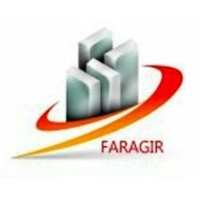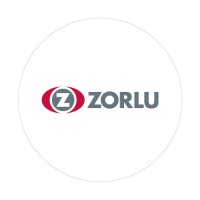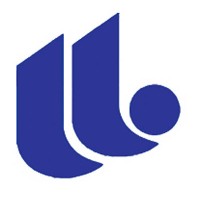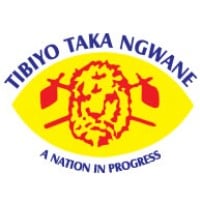
Khuzestan Steel Pervasive Development Group Company Company Cyber Security Posture
faragirgroup.irKhuzestan Steel Pervasive Development Group Company has been established on 16 January 2014 with ten billion rials capital In the form of a special share and with the approach of carrying out activities in commercial fields in order to supply raw and auxiliary materials for steel production and also to export the products of Khuzestan Steel Company (as a major shareholder). At the beginning of April 2014 according to the development policies of Khuzestan Steel Company and the realization of strategic goals in line with the sustainable supply of raw materials, investment and purchase of shares of two central iron ore companies and Shadgan Steel Industry was made. With the expansion of investments, the major shareholder decided to create an investment holding in order to plan and manage subsidiaries to achieve the goals and vision of the group in order to increase productivity, competitiveness, agility and ultimately increase profitability. In this way, Khuzestan Steel Comprehensive Trade Development Company in 2016, with the policies made, along with commercial activities, started the necessary planning for the integrated and modern management of subsidiaries with the aim of synergy. In this regard, the ownership of other subsidiary companies of Khuzestan Steel, including Ideparzaan Sanat Foalad and Khuzestan Steel Future Cultural and Sports Company, was transferred to this company. In addition, the shares of Pishgaman Foulad Jonoob and Ganjineh Pardis consulting engineers were purchased in 2016, and the comprehensive future insurance company was established. In 2017, the name of the company was changed to Khuzestan Steel Comprehensive Development Group, and in order to focus more on the management of subsidiaries and increase the productivity of investments, other unrelated activities were assigned to other companies. Currently, this holding has invested in 11 companies amounting to ten thousand billion Rials.
KSPDGC Company Details
khouzestan-steel-company-ksc-
318 employees
2813
523
Investment Management
faragirgroup.ir
Scan still pending
KHU_7171695
In-progress
Between 900 and 1000
This score is AI-generated and less favored by cyber insurers, who prefer the TPRM score.
 KSPDGC Global Score
KSPDGC Global Score.png)

Khuzestan Steel Pervasive Development Group Company Company Scoring based on AI Models
| Model Name | Date | Description | Current Score Difference | Score |
|---|---|---|---|---|
| AVERAGE-Industry | 03-12-2025 | This score represents the average cybersecurity rating of companies already scanned within the same industry. It provides a benchmark to compare an individual company's security posture against its industry peers. | N/A | Between 900 and 1000 |
Khuzestan Steel Pervasive Development Group Company Company Cyber Security News & History
| Entity | Type | Severity | Impact | Seen | Url ID | Details | View |
|---|---|---|---|---|---|---|---|
| Khouzestan Steel Company (KSC) | Cyber Attack | 100 | 6 | 06/2022 | KHO214616922 | Link | |
Rankiteo Explanation : Attack threatening the economy of a geographical regionDescription: Iran’s major steel company Khuzestan Steel Co. was targeted in a cyberattack by anonymous hacking group that forced it to halt production. However,the company survived the cyberattack and prevent structural damage to production lines that would impact supply chains and customers. The hackers also targeted two other steel plant companies in Iran. | |||||||
Khuzestan Steel Pervasive Development Group Company Company Subsidiaries

Khuzestan Steel Pervasive Development Group Company has been established on 16 January 2014 with ten billion rials capital In the form of a special share and with the approach of carrying out activities in commercial fields in order to supply raw and auxiliary materials for steel production and also to export the products of Khuzestan Steel Company (as a major shareholder). At the beginning of April 2014 according to the development policies of Khuzestan Steel Company and the realization of strategic goals in line with the sustainable supply of raw materials, investment and purchase of shares of two central iron ore companies and Shadgan Steel Industry was made. With the expansion of investments, the major shareholder decided to create an investment holding in order to plan and manage subsidiaries to achieve the goals and vision of the group in order to increase productivity, competitiveness, agility and ultimately increase profitability. In this way, Khuzestan Steel Comprehensive Trade Development Company in 2016, with the policies made, along with commercial activities, started the necessary planning for the integrated and modern management of subsidiaries with the aim of synergy. In this regard, the ownership of other subsidiary companies of Khuzestan Steel, including Ideparzaan Sanat Foalad and Khuzestan Steel Future Cultural and Sports Company, was transferred to this company. In addition, the shares of Pishgaman Foulad Jonoob and Ganjineh Pardis consulting engineers were purchased in 2016, and the comprehensive future insurance company was established. In 2017, the name of the company was changed to Khuzestan Steel Comprehensive Development Group, and in order to focus more on the management of subsidiaries and increase the productivity of investments, other unrelated activities were assigned to other companies. Currently, this holding has invested in 11 companies amounting to ten thousand billion Rials.
Access Data Using Our API

Get company history
.png)
KSPDGC Cyber Security News
CrowdStrike Remains Cybersecurity ‘Gold Standard:’ Analyst
A prominent Wall Street analyst says CrowdStrike is seeing 'increased momentum' in its business, suggesting the cybersecurity giant has ...
Cybersecurity company CrowdStrike moving its 'strategic technology hub' into new Redmond space
CrowdStrike is moving into new office space in Redmond, Wash., the cybersecurity software company confirmed on Wednesday. The company is ...
Germany seeks deeper partnership with Israel on cybersecurity
Germany plans to strengthen its cybersecurity collaboration with Israel and establish a joint cyber research center following the recent ...
Vermont’s Dual-Enrollment Cybersecurity Certificate
A Vermont partnership gives high school students hands-on experience in cybersecurity and a conditional acceptance to a local college.
CrowdStrike, Cloudflare Stock Cashing In As Cybersecurity Needs Grow
CrowdStrike stock reached a new high after a breaking out of a base. Cybersecurity name Cloudflare and two others produce big gains.
Cybersecurity M&A Roundup: 41 Deals Announced in June 2025
Forty-one cybersecurity merger and acquisition (M&A) deals were announced in June 2025 and added to SecurityWeek tracker.
New executive order targets federal cybersecurity gaps
The latest cybersecurity order sets some new standards and direction, but it also goes back and makes changes to Biden-era executive orders. If ...
Mastercard Launches Program to Support Cybersecurity Startups
Mastercard has expanded its startup engagement program with a focus on cybersecurity, fraud mitigation and payment resiliency.
Irish tech firm promises to slash cybersecurity audit times with AI
RunAudit's AI-powered software compresses compliance checks from weeks to hours.

KSPDGC Similar Companies

Al Muhaidib Group
Al Muhaidib Group is an international private group of companies based in Saudi Arabia that was founded in 1943 by the late Abdulkadir Al Muhaidib. The current Chairman of the Board of Directors is Sulaiman A. Al Muhaidib. The main interest of the company was selling wholesale building materia

Zorlu Holding
Zorlu Holding’in temelleri 1953 yılında, Denizli’nin Babadağ ilçesinde tekstil sektörü ile atılmıştır. Aile şirketi olarak faaliyetlerine başlayan Zorlu Grubu, güçlü bir kurumsallaşma örneği sergileyerek, bugün bünyesinde 34 bine yakın çalışan ve 60’tan fazla şirketi barındıran, 160 ülkeye ihracat y

Thomas Schumann Capital®
Established 2011 in Delaware, USA, Thomas Schumann Capital® (TSC) is a leading advocate for and investor in global water security. Operating at the nexus of water and capital TSC recognizes the critical importance of water as a fundamental human right and indispensable resource, by developing innova

Ghadir Investment Company
Ghadir Investment Company has been established in 1992-93 as a public joint stock company (Initially named “Bank Saderat Investment Co. – Private Joint Stock). It commenced its operations in a wide variety of business fields and by managing over 120 subsidiary companies. Later in 1996, this company

Tibiyo Taka Ngwane
Tibiyo Taka Ngwane invests in businesses that support the social, cultural and economic development of the Emaswati (the people of Eswatini). Through its diverse business portfolio - covering agriculture, agro-processing, manufacturing, services, tourism and hospitality, mining, property and media -

Dubai World
Global holding company Dubai World focuses on the strategic growth areas of Transport & Logistics, Drydocks & Maritime, Urban Development, Investment & Financial Services. Our portfolio contains some of the world’s leading companies in their industries, including Drydocks World, Economic Zones Wo

Frequently Asked Questions (FAQ) on Cybersecurity Incidents
KSPDGC CyberSecurity History Information
Total Incidents: According to Rankiteo, KSPDGC has faced 1 incidents in the past.
Incident Types: The types of cybersecurity incidents that have occurred include ['Cyber Attack'].
Total Financial Loss: The total financial loss from these incidents is estimated to be {total_financial_loss}.
Cybersecurity Posture: The company's overall cybersecurity posture is described as Khuzestan Steel Pervasive Development Group Company has been established on 16 January 2014 with ten billion rials capital In the form of a special share and with the approach of carrying out activities in commercial fields in order to supply raw and auxiliary materials for steel production and also to export the products of Khuzestan Steel Company (as a major shareholder). At the beginning of April 2014 according to the development policies of Khuzestan Steel Company and the realization of strategic goals in line with the sustainable supply of raw materials, investment and purchase of shares of two central iron ore companies and Shadgan Steel Industry was made. With the expansion of investments, the major shareholder decided to create an investment holding in order to plan and manage subsidiaries to achieve the goals and vision of the group in order to increase productivity, competitiveness, agility and ultimately increase profitability. In this way, Khuzestan Steel Comprehensive Trade Development Company in 2016, with the policies made, along with commercial activities, started the necessary planning for the integrated and modern management of subsidiaries with the aim of synergy. In this regard, the ownership of other subsidiary companies of Khuzestan Steel, including Ideparzaan Sanat Foalad and Khuzestan Steel Future Cultural and Sports Company, was transferred to this company. In addition, the shares of Pishgaman Foulad Jonoob and Ganjineh Pardis consulting engineers were purchased in 2016, and the comprehensive future insurance company was established. In 2017, the name of the company was changed to Khuzestan Steel Comprehensive Development Group, and in order to focus more on the management of subsidiaries and increase the productivity of investments, other unrelated activities were assigned to other companies. Currently, this holding has invested in 11 companies amounting to ten thousand billion Rials..
Detection and Response: The company detects and responds to cybersecurity incidents through {description_of_detection_and_response_process}.
Incident Details
Incident 1: Ransomware Attack
Title: {Incident_Title}
Description: {Brief_description_of_the_incident}
Date Detected: {Detection_Date}
Date Publicly Disclosed: {Disclosure_Date}
Date Resolved: {Resolution_Date}
Type: {Type_of_Attack}
Attack Vector: {Attack_Vector}
Vulnerability Exploited: {Vulnerability}
Threat Actor: {Threat_Actor}
Motivation: {Motivation}
Incident 2: Data Breach
Title: {Incident_Title}
Description: {Brief_description_of_the_incident}
Date Detected: {Detection_Date}
Date Publicly Disclosed: {Disclosure_Date}
Date Resolved: {Resolution_Date}
Type: {Type_of_Attack}
Attack Vector: {Attack_Vector}
Vulnerability Exploited: {Vulnerability}
Threat Actor: {Threat_Actor}
Motivation: {Motivation}
Common Attack Types: As of now, the company has not encountered any reported incidents involving common cyberattacks.
Identification of Attack Vectors: The company identifies the attack vectors used in incidents through {description_of_identification_process}.
Impact of the Incidents
Incident 1: Ransomware Attack
Financial Loss: {Financial_Loss}
Data Compromised: {Data_Compromised}
Systems Affected: {Systems_Affected}
Downtime: {Downtime}
Operational Impact: {Operational_Impact}
Conversion Rate Impact: {Conversion_Rate_Impact}
Revenue Loss: {Revenue_Loss}
Customer Complaints: {Customer_Complaints}
Brand Reputation Impact: {Brand_Reputation_Impact}
Legal Liabilities: {Legal_Liabilities}
Identity Theft Risk: {Identity_Theft_Risk}
Payment Information Risk: {Payment_Information_Risk}
Incident 2: Data Breach
Financial Loss: {Financial_Loss}
Data Compromised: {Data_Compromised}
Systems Affected: {Systems_Affected}
Downtime: {Downtime}
Operational Impact: {Operational_Impact}
Conversion Rate Impact: {Conversion_Rate_Impact}
Revenue Loss: {Revenue_Loss}
Customer Complaints: {Customer_Complaints}
Brand Reputation Impact: {Brand_Reputation_Impact}
Legal Liabilities: {Legal_Liabilities}
Identity Theft Risk: {Identity_Theft_Risk}
Payment Information Risk: {Payment_Information_Risk}
Average Financial Loss: The average financial loss per incident is {average_financial_loss}.
Commonly Compromised Data Types: The types of data most commonly compromised in incidents are {list_of_commonly_compromised_data_types}.
Incident 1: Ransomware Attack
Entity Name: {Entity_Name}
Entity Type: {Entity_Type}
Industry: {Industry}
Location: {Location}
Size: {Size}
Customers Affected: {Customers_Affected}
Incident 2: Data Breach
Entity Name: {Entity_Name}
Entity Type: {Entity_Type}
Industry: {Industry}
Location: {Location}
Size: {Size}
Customers Affected: {Customers_Affected}
Response to the Incidents
Incident 1: Ransomware Attack
Incident Response Plan Activated: {Yes/No}
Third Party Assistance: {Yes/No}
Law Enforcement Notified: {Yes/No}
Containment Measures: {Containment_Measures}
Remediation Measures: {Remediation_Measures}
Recovery Measures: {Recovery_Measures}
Communication Strategy: {Communication_Strategy}
Adaptive Behavioral WAF: {Adaptive_Behavioral_WAF}
On-Demand Scrubbing Services: {On_Demand_Scrubbing_Services}
Network Segmentation: {Network_Segmentation}
Enhanced Monitoring: {Enhanced_Monitoring}
Incident 2: Data Breach
Incident Response Plan Activated: {Yes/No}
Third Party Assistance: {Yes/No}
Law Enforcement Notified: {Yes/No}
Containment Measures: {Containment_Measures}
Remediation Measures: {Remediation_Measures}
Recovery Measures: {Recovery_Measures}
Communication Strategy: {Communication_Strategy}
Adaptive Behavioral WAF: {Adaptive_Behavioral_WAF}
On-Demand Scrubbing Services: {On_Demand_Scrubbing_Services}
Network Segmentation: {Network_Segmentation}
Enhanced Monitoring: {Enhanced_Monitoring}
Incident Response Plan: The company's incident response plan is described as {description_of_incident_response_plan}.
Third-Party Assistance: The company involves third-party assistance in incident response through {description_of_third_party_involvement}.
Data Breach Information
Incident 2: Data Breach
Type of Data Compromised: {Type_of_Data}
Number of Records Exposed: {Number_of_Records}
Sensitivity of Data: {Sensitivity_of_Data}
Data Exfiltration: {Yes/No}
Data Encryption: {Yes/No}
File Types Exposed: {File_Types}
Personally Identifiable Information: {Yes/No}
Prevention of Data Exfiltration: The company takes the following measures to prevent data exfiltration: {description_of_prevention_measures}.
Handling of PII Incidents: The company handles incidents involving personally identifiable information (PII) through {description_of_handling_process}.
Ransomware Information
Incident 1: Ransomware Attack
Ransom Demanded: {Ransom_Amount}
Ransom Paid: {Ransom_Paid}
Ransomware Strain: {Ransomware_Strain}
Data Encryption: {Yes/No}
Data Exfiltration: {Yes/No}
Ransom Payment Policy: The company's policy on paying ransoms in ransomware incidents is described as {description_of_ransom_payment_policy}.
Data Recovery from Ransomware: The company recovers data encrypted by ransomware through {description_of_data_recovery_process}.
Regulatory Compliance
Incident 1: Ransomware Attack
Regulations Violated: {Regulations_Violated}
Fines Imposed: {Fines_Imposed}
Legal Actions: {Legal_Actions}
Regulatory Notifications: {Regulatory_Notifications}
Incident 2: Data Breach
Regulations Violated: {Regulations_Violated}
Fines Imposed: {Fines_Imposed}
Legal Actions: {Legal_Actions}
Regulatory Notifications: {Regulatory_Notifications}
Regulatory Frameworks: The company complies with the following regulatory frameworks regarding cybersecurity: {list_of_regulatory_frameworks}.
Ensuring Regulatory Compliance: The company ensures compliance with regulatory requirements through {description_of_compliance_measures}.
Lessons Learned and Recommendations
Incident 1: Ransomware Attack
Lessons Learned: {Lessons_Learned}
Incident 2: Data Breach
Lessons Learned: {Lessons_Learned}
Incident 1: Ransomware Attack
Recommendations: {Recommendations}
Incident 2: Data Breach
Recommendations: {Recommendations}
Key Lessons Learned: The key lessons learned from past incidents are {list_of_key_lessons_learned}.
Implemented Recommendations: The company has implemented the following recommendations to improve cybersecurity: {list_of_implemented_recommendations}.
References
Additional Resources: Stakeholders can find additional resources on cybersecurity best practices at {list_of_additional_resources}.
Investigation Status
Incident 1: Ransomware Attack
Investigation Status: {Investigation_Status}
Incident 2: Data Breach
Investigation Status: {Investigation_Status}
Communication of Investigation Status: The company communicates the status of incident investigations to stakeholders through {description_of_communication_process}.
Stakeholder and Customer Advisories
Incident 1: Ransomware Attack
Stakeholder Advisories: {Stakeholder_Advisories}
Customer Advisories: {Customer_Advisories}
Incident 2: Data Breach
Stakeholder Advisories: {Stakeholder_Advisories}
Customer Advisories: {Customer_Advisories}
Advisories Provided: The company provides the following advisories to stakeholders and customers following an incident: {description_of_advisories_provided}.
Initial Access Broker
Incident 1: Ransomware Attack
Entry Point: {Entry_Point}
Reconnaissance Period: {Reconnaissance_Period}
Backdoors Established: {Backdoors_Established}
High Value Targets: {High_Value_Targets}
Data Sold on Dark Web: {Yes/No}
Incident 2: Data Breach
Entry Point: {Entry_Point}
Reconnaissance Period: {Reconnaissance_Period}
Backdoors Established: {Backdoors_Established}
High Value Targets: {High_Value_Targets}
Data Sold on Dark Web: {Yes/No}
Monitoring and Mitigation of Initial Access Brokers: The company monitors and mitigates the activities of initial access brokers through {description_of_monitoring_and_mitigation_measures}.
Post-Incident Analysis
Incident 1: Ransomware Attack
Root Causes: {Root_Causes}
Corrective Actions: {Corrective_Actions}
Incident 2: Data Breach
Root Causes: {Root_Causes}
Corrective Actions: {Corrective_Actions}
Post-Incident Analysis Process: The company's process for conducting post-incident analysis is described as {description_of_post_incident_analysis_process}.
Corrective Actions Taken: The company has taken the following corrective actions based on post-incident analysis: {list_of_corrective_actions_taken}.
Additional Questions
General Information
Ransom Payment History: The company has {paid/not_paid} ransoms in the past.
Last Ransom Demanded: The amount of the last ransom demanded was {last_ransom_amount}.
Last Attacking Group: The attacking group in the last incident was {last_attacking_group}.
Incident Details
Most Recent Incident Detected: The most recent incident detected was on {most_recent_incident_detected_date}.
Most Recent Incident Publicly Disclosed: The most recent incident publicly disclosed was on {most_recent_incident_publicly_disclosed_date}.
Most Recent Incident Resolved: The most recent incident resolved was on {most_recent_incident_resolved_date}.
Impact of the Incidents
Highest Financial Loss: The highest financial loss from an incident was {highest_financial_loss}.
Most Significant Data Compromised: The most significant data compromised in an incident was {most_significant_data_compromised}.
Most Significant System Affected: The most significant system affected in an incident was {most_significant_system_affected}.
Response to the Incidents
Third-Party Assistance in Most Recent Incident: The third-party assistance involved in the most recent incident was {third_party_assistance_in_most_recent_incident}.
Containment Measures in Most Recent Incident: The containment measures taken in the most recent incident were {containment_measures_in_most_recent_incident}.
Data Breach Information
Most Sensitive Data Compromised: The most sensitive data compromised in a breach was {most_sensitive_data_compromised}.
Number of Records Exposed: The number of records exposed in the most significant breach was {number_of_records_exposed}.
Ransomware Information
Highest Ransom Demanded: The highest ransom demanded in a ransomware incident was {highest_ransom_demanded}.
Highest Ransom Paid: The highest ransom paid in a ransomware incident was {highest_ransom_paid}.
Regulatory Compliance
Highest Fine Imposed: The highest fine imposed for a regulatory violation was {highest_fine_imposed}.
Most Significant Legal Action: The most significant legal action taken for a regulatory violation was {most_significant_legal_action}.
Lessons Learned and Recommendations
Most Significant Lesson Learned: The most significant lesson learned from past incidents was {most_significant_lesson_learned}.
Most Significant Recommendation Implemented: The most significant recommendation implemented to improve cybersecurity was {most_significant_recommendation_implemented}.
References
Most Recent Source: The most recent source of information about an incident is {most_recent_source}.
Most Recent URL for Additional Resources: The most recent URL for additional resources on cybersecurity best practices is {most_recent_url}.
Investigation Status
Current Status of Most Recent Investigation: The current status of the most recent investigation is {current_status_of_most_recent_investigation}.
Stakeholder and Customer Advisories
Most Recent Stakeholder Advisory: The most recent stakeholder advisory issued was {most_recent_stakeholder_advisory}.
Most Recent Customer Advisory: The most recent customer advisory issued was {most_recent_customer_advisory}.
Initial Access Broker
Most Recent Entry Point: The most recent entry point used by an initial access broker was {most_recent_entry_point}.
Most Recent Reconnaissance Period: The most recent reconnaissance period for an incident was {most_recent_reconnaissance_period}.
Post-Incident Analysis
Most Significant Root Cause: The most significant root cause identified in post-incident analysis was {most_significant_root_cause}.
Most Significant Corrective Action: The most significant corrective action taken based on post-incident analysis was {most_significant_corrective_action}.
What Do We Measure?
















Every week, Rankiteo analyzes billions of signals to give organizations a sharper, faster view of emerging risks. With deeper, more actionable intelligence at their fingertips, security teams can outpace threat actors, respond instantly to Zero-Day attacks, and dramatically shrink their risk exposure window.
These are some of the factors we use to calculate the overall score:
Identify exposed access points, detect misconfigured SSL certificates, and uncover vulnerabilities across the network infrastructure.
Gain visibility into the software components used within an organization to detect vulnerabilities, manage risk, and ensure supply chain security.
Monitor and manage all IT assets and their configurations to ensure accurate, real-time visibility across the company's technology environment.
Leverage real-time insights on active threats, malware campaigns, and emerging vulnerabilities to proactively defend against evolving cyberattacks.




